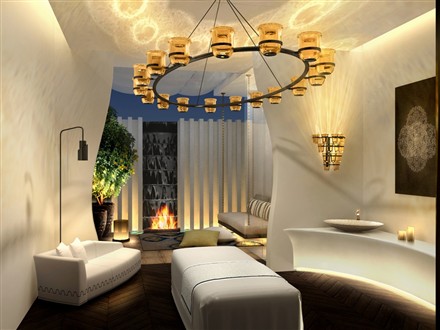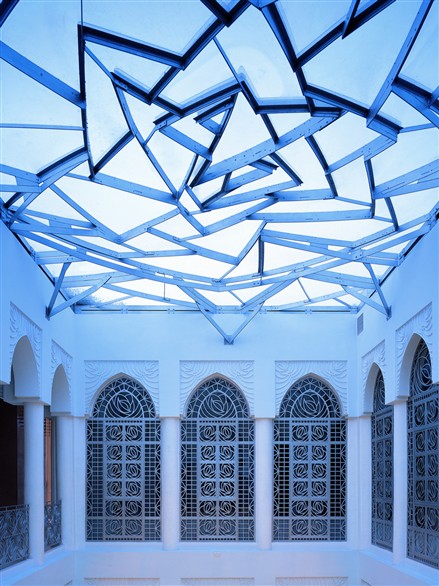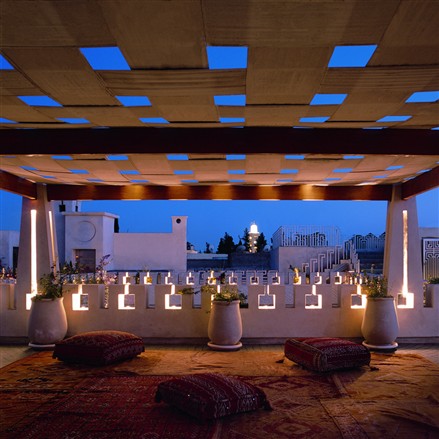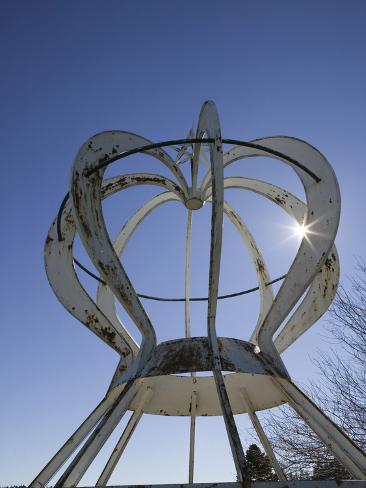Magical morocco
From the smells and sounds that suffuse the Medinas of Marrakech to spectacular treks past Berber villages, the colours and flavours of Morocco indulge the senses.
A popular holiday destination, the North African country also offers year-round sunshine, exclusive beach resorts, majestic riads and all the benefits of a European lifestyle - minus the price tag.
In recent years, Morocco has shot into the media spotlight as a celebrity getaway, where globetrotters like David and Victoria Beckham, Jude Law and George Clooney luxuriate on rich sandy beaches, lush golf courses and resorts such as the Mediterrania in Saidia.
Situated within easy reach of most major European cities, Morocco is bordered by Spain to the north, Algeria to the east and Mauritania to the south, and its Atlantic coastline stretches into the Mediterranean Sea through the Strait of Gibraltar.
Morocco's enviable climate makes it a popular holiday spot for Europeans, and indeed it offers all the benefits of a European lifestyle - minus the price tag.
"Moroccan property is priced at up to 50 per cent of those in other popular European property buying hotspots such as Spain, France and Italy" says Peter Rabitz of Wetag Consulting.
Home Hunts International also estimates that the average cost per sq m for a Moroccan property is half that of Spain or France, with plenty of room for appreciation.
Morocco has not been immune to the global economic downturn, but it has fared much better than the likes of other North African states, the UK and the USA.
According to Knight Frank's international research department in London, the residential real estate market in Morocco has performed well, with home prices rising by 35 to 40 per cent in the five years leading up to 2008.
Since then, prices dropped by up to 20 per cent in the early half of 2009 but have now stabilised and are forecasted to grow again.
Following a visit to Morocco at the end of 2009, the International Monetary Fund (IMF) issued the property market a vote of confidence, highlighting that the country's economic performance has remained solid, and the Buy Association predicted that capital gains of up to thirty-five per cent are possible for long term investors.
The Moroccan government has also simplified and legitimised the property buying process considerably since King Mohammed VI launched the Vision 2010 infrastructure development programme in January 2001, including ownership rules, laws and processes.
These changes, combined with long term governmental plans to structure the economy and allow for free US and European/Moroccan trade, are part of the reason that prospects for home buyers, particularly those with a view for a vacation getaway, are very positive.
The Vision 2010 tourism development programme has led to an increasing surge in tourism and has had ‘huge impact' on the property market, according to Jerome Danan of Home Hunts International.
"The growth over the past few years has been enormous, with four times as many properties being built (now) than in previous years."
Statistics show a six per cent increase in visitors between October 2008 and 2009. With this steady growth set to continue, it is an indicator that all systems are go for investors.
Given that France was the former protectorate of most of the southern part of the country until 1956, it's not surprising that the French influence is still dominant and the French are overwhelmingly the largest group of foreign buyers, investing in nearly ten times more luxury property in Morocco than the Brits or Americans.
Although there are significantly fewer Asian investors Morocco than other foreigners, the lifted restrictions on visa regulations provide a clearer window for such buyers to move in.
The hub of interest in property is Marrakech, where half of transactions are now made by international buyers.
"Marrakech is largely dominated by tourists and second home buyers who benefit from the lower cost of a luxury lifestyle" say Peter Rabitz. "Marrakech is very ‘European.
You can find it all" says Danan, adding that prices in the admired city have been rising steadily over the past five years.
Like many North African cities, Marrakech comprises both an old fortified city (the Medina,) and an adjacent modern city (Gueliz). Both are served by Ménara International Airport and a rail link to economic centre Casablanca and the north.
Marrakech is also home to the country's biggest souk, or market, and Djemaa el Fna, one of the busiest city squares in the world.
The square bustles with acrobats, story-tellers, water sellers, dancers, and musicians. By night, a plethora of food stalls open in the square turning it into a tantalising open-air restaurant.
In addition to its cuisine, Morocco is renowned internationally for its traditional architecture form, the riad, which requires a specialised living arrangement.
All rooms face a central courtyard, where water and vegetation in the middle create harmony and a near spiritual ambience. The rooms, often on two levels, feature high ceilings to provide natural cooling.
Huge U-shaped arches, ornamental Islamic calligraphy and geographical patterns are other features of the riad. However, despite their aesthetic appeal, traditional designs are not always the most coveted property option.
"People are more in search of vacation homes in a Mediterranean or Western-style," says Rabitz.
The Medina area of the city is the first area of consideration for many foreign buyers. However, Rabitz cautions, "luxury properties in this area are usually extremely hard to come by."
The Medina offers riads between US$1.4 million to US$4.1 million on the lower end of the luxury segment.
However, for an exclusive, fully restored riad - featuring a hamam, pool, several bedrooms, a library and a wine cellar - buyers can expect to pay from US$6.8 million upwards.
2009 saw the average riad prices definitively breach the US$2,700 per sq m barrier for all riad sizes, with the smallest riad size category reaching US$5,500 per sq m.
Outside of the Medina quarter and in the Palmerie areas, prices can reach exorbitant highs; one 4,000-sq m estate recently sold for US$42 million.
Those looking for a new development, however, might find the fourteenhectare Jawhar Estate an inviting opportunity.
Located in Menana and a 15 minute walk from the Medina, the project will include 5-star hotel and 25 private villas, operational at the end of 2011.
The Jawar Estate is being financed and developed by Aerium Atlas Management, which has signed a management agreement with SBM, operator of Monaco's most prestigious resort, Monte-Carlo.
Prices are anticipated to be in the range of US$2.7 million to US$8.25 million.
Outside of Marrakech, "Tangiers, Fes, Agadir and Casablanca are major vacation cities which have become more popular in the last few years,"
says Jawad Tackoen of Tackoen Real Estate.
Also, Essauoria, to the west of Marrakech is a charming city of only 70,000 residents, protected by a natural bay partially shielded by wave action from the Iles Purpuraires.
The beach front extends from the harbour, at which point the Oued Ksob discharges to the sea and an ocean drive might take you across the nearby Atlas Mountains to Tétouan.
There are many opportunities for scenic walks and sporting activities and both apartments and riads can afford spectacular views of the scenery and mountain landscape.
Prices are approximately 30 per cent lower in this area than in Marrakech, and buyers can expect to pay from as little as US$400,000 for a whole riad.
In general, property analysts agree that the foundations of Morocco's luxury market are strong, but anticipate slow, steady growth. Investors should come prepared for the longer haul but are sure to reap benefits.
A report from CBRE estimates that investors in prime Moroccan residential property may double their money within 10 years.
A piece of stillness in Morocco - where it is felt that everything should be done to make an art de vivre - is sure to make the wait worthwhile.
Source: LP Luxury Properties
 
 | 







































